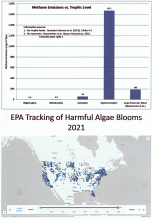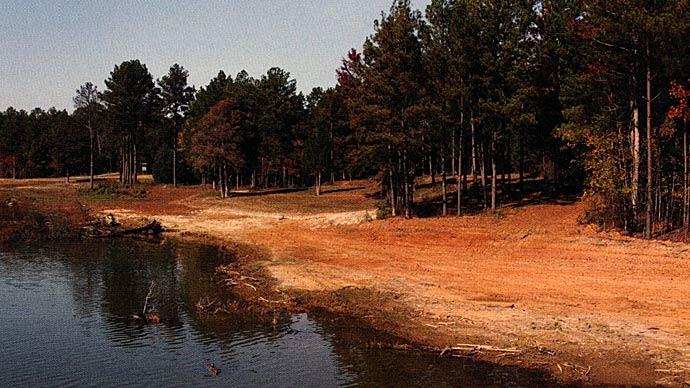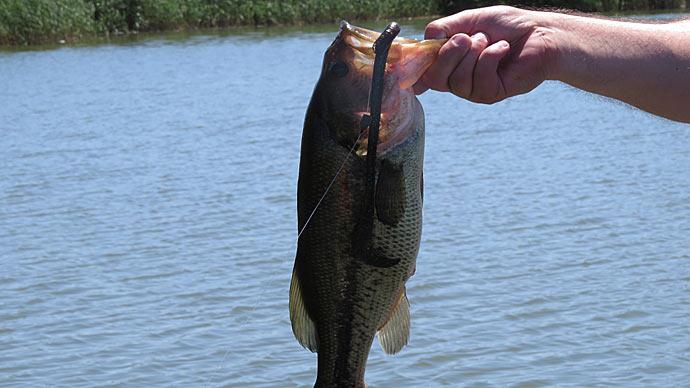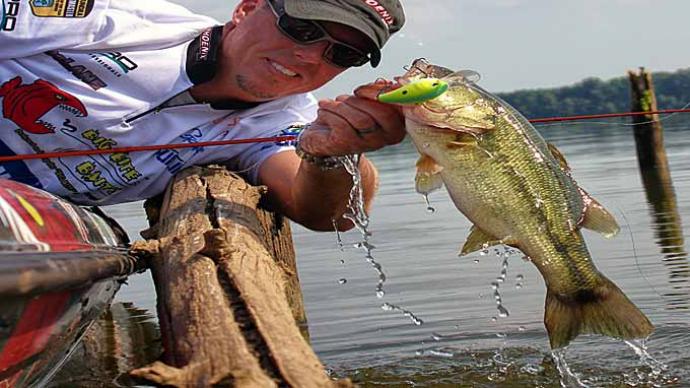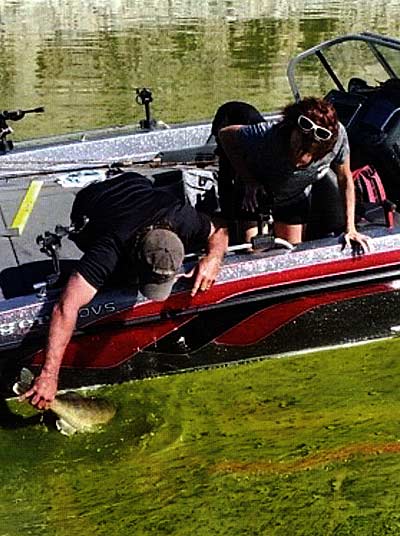
It's 2:25 a.m. as I sit here, sipping delicious coffee on one side and a nip of similarly delicious Bourbon on the other. I slept for a few hours, and dreams woke me up. It's my regular routine. This is my reflection time. It's when the historian and ecologist in me think about our "direction."
And it's my writing time.
So, Pondmeisters, here are a few data points to ruminate on during your thinking time. They've been gleaned from the hard work of some brilliant people, researchers who study water, and environmental service providers who work with water. Many of us are tracking with Gordon Lightfoot's lyrical line from his song, "Sundown,"...and we're tempted to slip into that "no pain" zone of resignation and hopelessness. But there really is some chance we humans will get our act together. There is some hope.
Best of all, there's action that any water manager can employ. Each of us can make a difference. But we all have to start with "understanding." None of us get a free ride... we all have some dots to connect. So, please take this information on board, leverage it, and watch what happens with your water.
Just twenty years ago, the word "hyper-eutrophic" barely existed. Today, it's commonplace among environmental service providers and people who manage water. In 1972, about 15% of water was eutrophic, meaning it was "nutrient-rich" and thus vulnerable to harmful algae blooms. Today, at least 55% of fresh water in the United States is nutrient-impaired, and a sizable fraction of this volume is hypereutrophic. And as scientists have quantified, this water produces methane, more than ten times as much of the potent greenhouse gas than even eutrophic water.
Why?
And why is all of this coming down on us right now? I think there are two reasons: some of the types of chemicals used to kill algae and/or aquatic vegetation, and inaction...doing nothing. So, here's a visual that will help with perspective. I will walk you through the dots.
The sludge that results from Harmful Algae is where biogenic methane is generated—increased sludge results in increased methane. But here's the hopeful data...all you have to do is maintain .2 part per million of dissolved oxygen on the top of your sludge to eliminate 50 to 80% of the methane that wants to bubble up through your sludge on its way to our atmosphere.
HABs are what we humans can see because they occur on the top of waterways. They are visible and ugly. It's normal for the sight of an ongoing Harmful Algae Bloom to get people fired up! They certainly don't want this green, or sometimes multi-colored, bioslime gunk to die on their beach! And many of us require instant gratification. We are not disposed to long-term, natural solutions.
We want a fix, and we want it now!
It only takes a couple parts per million of nutrient (phosphorus and/or nitrogen) to trigger a H AB. Think of this as you add fertilizer to your water. Or fish food, for that matter. It's all about nutrients. And similarly, it doesn't take a high volume of biocide, as in chemicals, to kill it. In other words, it's relatively cheap to kill a HAB with chemicals. But here's the rest of the story... killing the HAB results in sludge, which results in methane. Not doing anything also results in sludge, as the HAB dies and settles onto the bottom of a waterway, just like what happens in association with chemical treatment.
So, if you kill a HAB, you inadvertently grow methane. If you do nothing, you inadvertently grow methane. Today, these two "responses" represent Best Management Practices for 95% of all nutrient-impaired water. In fact, on government-managed waterways, the number is nearly 100%. But don't forget about "hyper" eutrophic water. Remember that it's emitting much more greenhouse gas than regular, average, eutrophic water.
NOAA has installed some fifty atmospheric reporting stations across the planet. They purposely position these stations far from possible "point source" emission sites, like natural gas or industrial manufacturing settings. Because biogenic methane has a different isotope signature than methane associated with oil and gas, they can differentiate between the two. Oil and gas-derived methane is relatively stable, but biogenic methane is increasing steeply, just like HABs.
The connection?
Folks, biogenic methane is not about cattle burps. Cattle numbers are relatively stable. Our problem is nutrient pollution, and here's the scary part of the story. This phenomenon has occurred before. Biogenic methane has been the ultimate greenhouse gas driver in several of the five major extinction events our planet has experienced. The Great Permian extinction event occurred over 300,000 years ago when Earth's atmosphere warmed by ten degrees Centigrade. This current event, the one we are in now, has seen a temperature increase of 1.2 degrees Centigrade in just forty years. And the rate is increasing. Instead of 300,000 years, we may only have a generation or two before climate change is so extreme, we've run out of options.
Humans are a generalist species. We are likely to survive even an extreme extinction event. But not eight billion of us. In my estimation, maybe a million. Maybe far less. So, good luck with our space program. Maybe we will find a new planet to settle on before this one becomes uninviting...think 25 degrees F. warmer than today?
What can we do to change this? The answer is clear. Employ nature's model. Strategically integrate nature's wetland effect across nutrient-impaired water, and do so now. Nutrient pollution can be cycled into healthy, extremely abundant waterways. Grow fish, harvestable fish, instead of algae. Know how much nutrient is happening in your water, and be sure to harvest enough to improve your water quality. But do so now, quickly.
We are advancing into this current extinction event at an incredible rate, even compared to the greatest previous extinction event. The upside? You will see an almost immediate response to naturalized stewardship! Like a nearly 20% bump in fish biomass! (Neal and Lloyd, 2018).
Oxygenate that nutrient-rich, stratified bottom water. Remember, all you need is .2 ppm of dissolved oxygen in the uppermost layer of sludge to take a massive bite out of methane. And here's another quick data point... nutrient-rich water generates 1.4 times as much methane as all of oil and gas. (Rosentreter et al. 2021). Fresh water is the primary source of methane. Keep this in mind as you consider adding nutrients to your water.
Floating Island International is part of a team that plans to employ surface area and circulation (key components of nature's wetland effect) on a seventy-mile-long nutrient-impaired government reservoir. We will employ hundreds of acres of floating solar, Floatovoltaics, and BioHaven Floating Islands on the reservoir. A small portion of the solar power will be used for oxygenation.
For example, based on a working model at our research center in Shepherd, Montana, just 100 horsepower of a unique, FII oxygenation technology can treat more than 140,000 acre-feet of water daily. Again, that's because methane-mitigating microbes, methanotrophs, only require 0.2 ppm of dissolved oxygen to consume 50 to 80% of biogenic methane. The bottom line is that we have a window of opportunity to fix even vast waterways!
So, dear Pondmeister, I humbly apologize for the length of this article! But please come away with this knowledge. We humans are in a pivotal place...we can dramatically reduce greenhouse gas. The required investment is surprisingly small. We can mitigate the current extinction event. We can make a significant difference and, in the process, buy time for future humans to improve things.
Abundance is at our fingertips! With management, nutrients can be cycled into fish. Your water can be totally productive, top to bottom. You don't have to write off that nutrient-rich, stratified bottom water. It can be specifically oxygenated using state-of-the-art technology. You don't have to treat your entire lake...just the ten or twenty percent that is stratified and lacking oxygen.
We can drown frustration with Bourbon as Gordon Lightfoot's classic "Sundown" ballad suggests, or we can partner with nature and employ long-term, natural solutions. We can leverage nature's wetland effect.
What we can't do is totally defer to chemicals. And we can't do "nothing" and expect to pull through. So, if you manage water, I suggest you get super comfortable with eating fish from your water.
Grow fish, harvest fish, and then eat them!
Cycle those nutrients out of your water!
Reprinted with permission from Pond Boss Magazine

